
© 2003 McGraw-Hill Ryerson Limited
Isocost/Isoquant Analysis
Isocost/Isoquant Analysis
Chapter 10 Appendix
Chapter 10 Appendix

10A - 2
© 2003 McGraw-Hill Ryerson Limited
Isocost/Isoquant Analysis
Isocost/Isoquant Analysis
◆In the long run, a firm can vary all of the
factors of production.
◆One important decision in the long run
is which combination of factors to use?
◆Economic efficiency involves choosing
the factors so that the cost of production
is at the minimum.

10A - 3
© 2003 McGraw-Hill Ryerson Limited
Isocost/Isoquant Analysis
Isocost/Isoquant Analysis
◆A graphical tool used in economics to
analyze the long run choice of factors of
production is the isocost/isoquant
analysis.

10A - 4
© 2003 McGraw-Hill Ryerson Limited
The Isoquant Curve
The Isoquant Curve
◆An isoquant curve (equal quantity)
represents combinations of factors of
production that result in equal amounts
of output.

10A - 5
© 2003 McGraw-Hill Ryerson Limited
The Isoquant Curve for 60
The Isoquant Curve for 60
Earrings,
Earrings, Fig. A10-2, p 229
Fig. A10-2, p 229
Units of labour
Machines
B
A
G
C
D
F
E
(Q60)

![Bài giảng phương pháp định lượng trong quản trị tài chính: Chương 7 [mới nhất]](https://cdn.tailieu.vn/images/document/thumbnail/2014/20140701/conchimnhai/135x160/5681404208925.jpg)
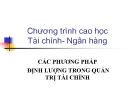
![Bài giảng phương pháp định lượng trong quản trị tài chính: Chương 5 [chuẩn nhất]](https://cdn.tailieu.vn/images/document/thumbnail/2014/20140701/conchimnhai/135x160/961404208930.jpg)
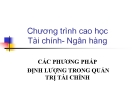
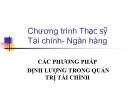
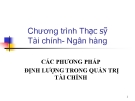

![Mức ô nhiễm tối ưu: Kinh nghiệm và giải pháp [Năm hiện tại]](https://cdn.tailieu.vn/images/document/thumbnail/2013/20130724/alt_12/135x160/1781374638351.jpg)
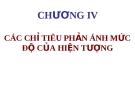







![Định mức kinh tế - kỹ thuật ngành, nghề Kế toán doanh nghiệp: [Thông tin chi tiết/Cập nhật mới nhất]](https://cdn.tailieu.vn/images/document/thumbnail/2025/20251225/tangtuy08/135x160/21111766651144.jpg)


![Đầu tư tài chính: Nguyên lý kế toán [Chuẩn nhất]](https://cdn.tailieu.vn/images/document/thumbnail/2025/20251222/thuyanlac888/135x160/21341766395451.jpg)



![Phải trả người lao động: Nguyên lý kế toán [chuẩn nhất]](https://cdn.tailieu.vn/images/document/thumbnail/2025/20251222/thuyanlac888/135x160/45161766395453.jpg)

